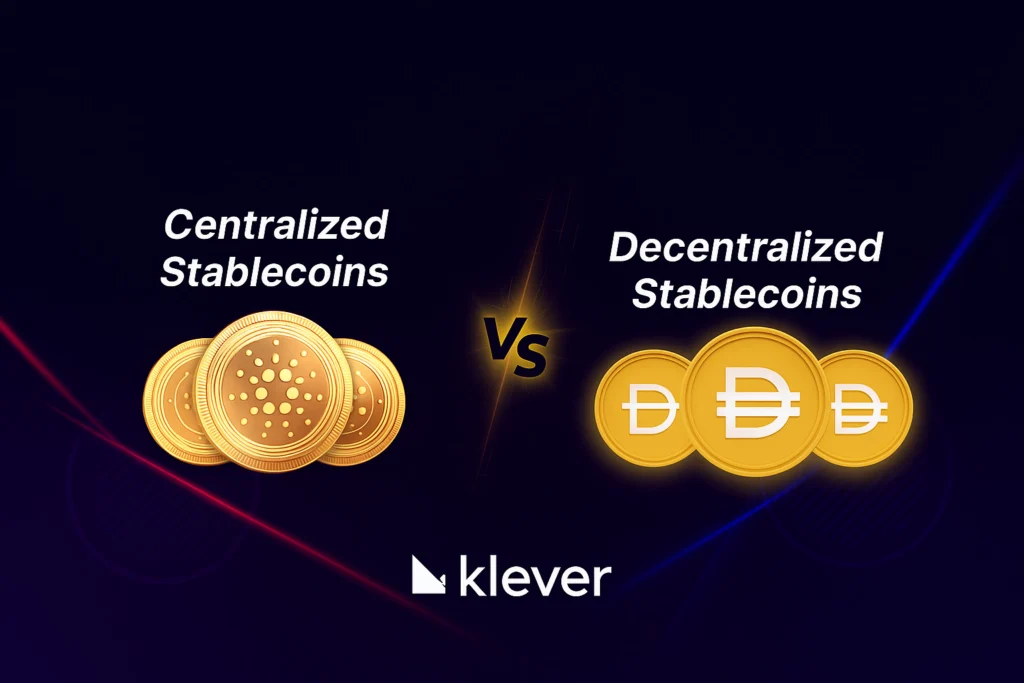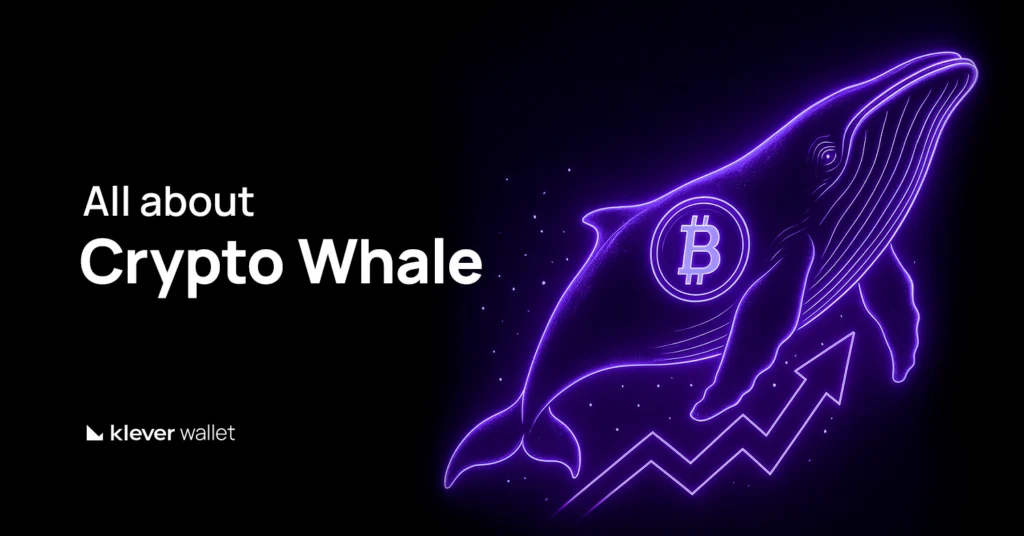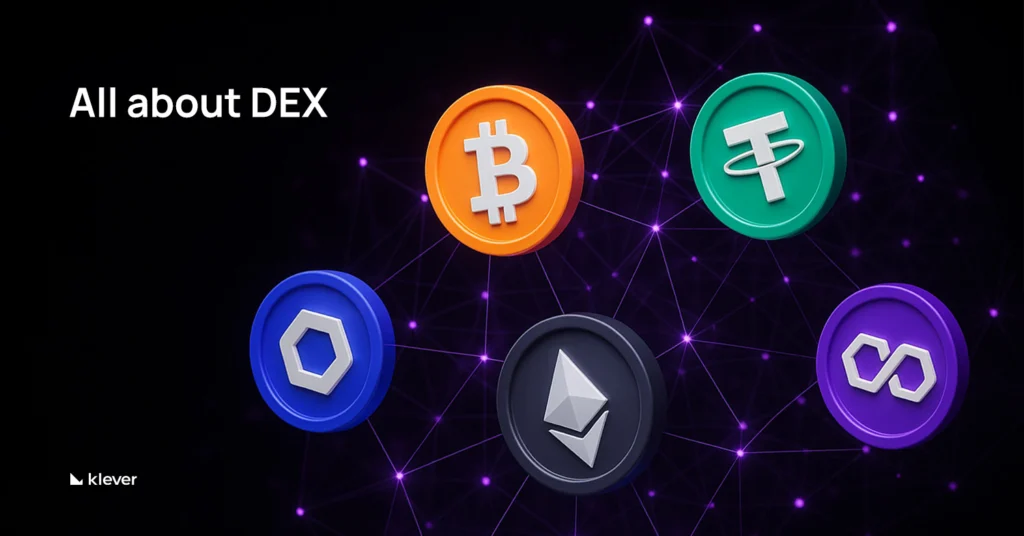
Not all stablecoins are built alike — and that matters more than most users realize.
While they all aim to maintain a fixed value, the way they do it varies significantly. Some rely on centralized entities and reserves, like USDT and USDC. Others, such as LUSD and RAI, operate through decentralized protocols and algorithmic mechanisms.
These design choices directly impact transparency, risk, censorship resistance, and even how useful a stablecoin is across DeFi platforms.
If you use stablecoins for trading, payments, or yield farming, understanding the difference between decentralized and centralized models isn’t optional — it’s critical.
What Are Centralized Stablecoins?
Centralized stablecoins are issued by companies that hold off-chain reserves such as U.S. dollars, bank deposits, or Treasury bonds.
Examples: Tether (USDT), USD Coin (USDC)
How Centralized Stablecoin Work?
The company behind the stablecoin issues tokens that are supposed to be backed 1:1 by assets such as dollars or U.S. Treasury bills. When users buy or redeem the stablecoin, the issuer adjusts the reserves to keep the value stable. Trust in the issuer’s ability to hold and manage those reserves is what maintains the peg to the dollar.
- Pros: Centralized stablecoins are widely accepted across exchanges, wallets, and payment platforms. They offer deep liquidity, making it easy to trade or transfer large amounts, and provide straightforward on/off ramps to convert between crypto and traditional money.
- Cons: The issuing company has the power to freeze or block specific wallets if required by regulators. Their stability also relies on banks and financial institutions holding the reserves, which exposes users to counterparty and regulatory risks.
📊 In 2025, centralized stablecoins dominate the market with over 90% share. USDT alone represents more than 66% of all stablecoin supply.
What Are Decentralized Stablecoins?
Decentralized stablecoins are created and managed by smart contracts on the blockchain. Instead of banks, they use on-chain collateral (like ETH) to keep value stable.
Examples: Liquity USD (LUSD), Reflexer RAI, Aave’s GHO
How Decentralized Stablecoins work?
Users deposit cryptocurrencies like ETH into a smart contract as collateral. In return, they can mint new stablecoins. To ensure stability, the system requires the collateral to be worth more than the stablecoins issued (over-collateralization).
If the value of the collateral drops too much, part of it can be liquidated to keep the stablecoin’s price close to $1. The peg is maintained through these incentives and automated mechanisms.
- Pros: Since they run entirely on smart contracts, no central company can freeze or block your funds. All collateral is stored on-chain, meaning reserves are transparent and can be verified by anyone at any time.
- Cons: They usually have less liquidity compared to centralized options, which can make trading harder. Their price stability can also be stressed during sharp market downturns, as falling collateral values increase the risk of liquidations and temporary depegs.
Centralized vs. Decentralized Stablecoins: Quick Comparison
| Feature | Centralized (USDT, USDC) | Decentralized (LUSD, RAI) |
| Backing | Backed by cash, bank deposits, and U.S. Treasuries held by a company | Backed by cryptocurrencies like ETH locked directly in smart contracts |
| Control | The issuer can freeze or blacklist wallets to meet regulatory demands | No single entity controls funds — rules are enforced automatically by code |
| Adoption | Extremely popular worldwide, used on most exchanges and payment platforms | Mostly adopted in DeFi protocols, with smaller but growing usage |
| Risks | Dependent on banks, regulators, and custodians holding reserves | Exposed to crypto price swings and liquidation risks if collateral value falls |
Regulation and Future Outlook
In 2024, the European Union introduced MiCA (Markets in Crypto-Assets), the first major regulation designed specifically for cryptocurrencies and stablecoins. Under MiCA, issuers must prove that their tokens are fully backed by reserves, provide regular audits, and comply with strict financial standards.
Centralized stablecoins like USDC and USDT can adapt more easily because they already operate with reserve reports and corporate structures. On the other hand, decentralized stablecoins face greater uncertainty, since they are governed by smart contracts and communities rather than a registered company. Regulators are still debating how these decentralized models should fit into legal frameworks, leaving their long-term treatment unclear.
- For payments and exchange trading: Centralized stablecoins like USDT and USDC are usually the best choice. They have the highest liquidity, are supported on nearly every exchange, and make it easy to move between crypto and traditional money.
- For DeFi and financial independence: Decentralized stablecoins such as LUSD or RAI are better suited. They cannot be frozen by a company, reserves are fully transparent on-chain, and they give users more control over their assets.
The right option depends on your priorities. If you value convenience, speed, and compliance, centralized coins are more practical. If you care more about self-custody, censorship resistance, and decentralization, decentralized stablecoins are the stronger fit.
The Future of Stablecoins: Trust, Transparency and Self-Custody with Klever Wallet
Stablecoins are the backbone of the crypto economy, but their designs come with different trade-offs. Centralized stablecoins deliver scale, liquidity, and easier compliance, while decentralized stablecoins promote financial freedom and transparency. As global regulations tighten, both models will likely coexist, each serving different purposes in the digital economy.Want to explore both worlds safely? Download Klever Wallet — a self-custody, multi-chain wallet where you can store, trade, and manage stablecoins like USDT, USDC, LUSD and more with full control over your assets.




